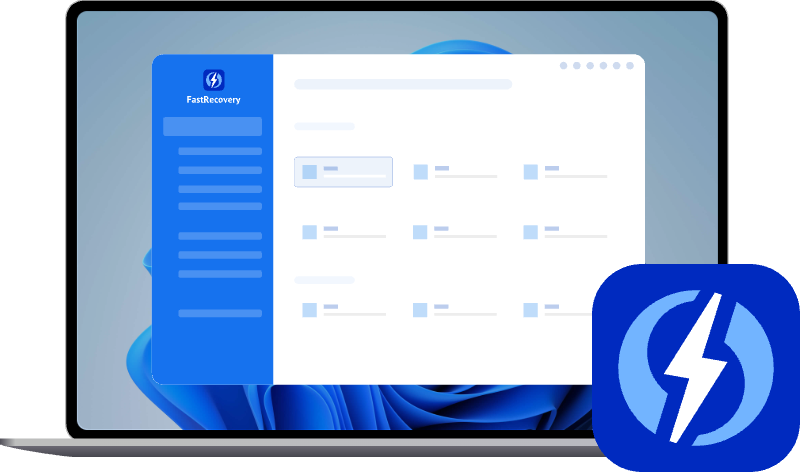How to Recover Deleted iTunes Backup on Windows
How to recover deleted iTunes backups on Windows? Here, we'll show you two effective methods, along with detailed steps and screenshots. Scroll down 👇 to explore more!
Can you recover deleted iTunes backup?
iTunes helps users back up their iPhone to a computer, which will create a backup package containing almost all iPhone data. With iTunes backup, we can easily recover lost iPhone data.
However, the iTunes backup files may also be missing when cleaning up disk space, or just accidentally deleted iTunes backups. Worse still, the deleted files cannot be found in the Recycle Bin either. So, can you recover the deleted iTunes backup?
Fortunately, the answer is Yes! It is possible to recover permanently deleted files even if you do not have a backup of your computer. When files are deleted, they don't disappear from the computer but wait to be overwritten by new data. Therefore, when you find your iTunes backup is lost, please stop using the computer immediately to prevent lost files from being overwritten.
How to recover deleted iTunes backup (2 Ways)
Here are two ways that can help you recover deleted iTunes backup file. You can try to restore from Windows backup (if there is one). If not, it's suggested to go directly to Way 2, which does not require a backup.
▶ Way 1. Recover deleted iTunes backup via Previous Versions
File History is a Windows backup feature that can back up the user's folders. In Windows 10, you can add any folder to backup in this software. Please be sure you are using Windows 10 and backup the iTunes backup folder. Then, you can go to the folder and check if there is a previous version of the iTunes backup.
Step 1. Right-click the iTunes backup folder and select the Restore previous versions option.
-
✦ Windows 11/10/8: C:\Users\[PC name]\AppData\Roaming\Apple Computer\ MobileSync\ Backup or C:\Users\[PC name]\Apple\MobileSync\Backup\.
-
✦ Windows 7: C:\Users\Your username\AppData\Roaming\Apple Computer\MobileSync\Backup\.
Step 2. Check and choose a previous version containing the iTunes backup file. You can click Open > Open in File History to verify.
Step 3. After confirmation, click Restore and select a new location to recover deleted iTunes backup.
▶ Way 2. Recover deleted iTunes backup with AOMEI FastRecovery 🔥
If there is no available backup, then you can rely on a reliable data recovery tool to recover deleted iTunes backup files. As mentioned before, deleted files may still be on your computer and we can't see them, but recovery software can get them out.
🚀Powerful data recovery software for Windows - AOMEI FastRecovery
There are quite a few Windows data recovery tools on the market. Here, we highly recommend using AOMEI FastRecovery. It is simple and easy to operate as it has a clear and intuitive interface. It's partitioned well, so you can easily find the drive or partition and click Start Scan to get started.
Also, it's fast. The Quick Scan takes only 3-5 seconds. It displays only deleted files instead of all data, so you can find files quickly, especially using the Search box or Filter feature. In addition, it allows you to recover deleted iTunes backups during scanning.
In sum, it is an ideal tool for those who don't know much about computers. It's read-only and does not cause data overwriting, making data recovery more difficult.
You can click the download button to get started and follow the steps below to recover deleted iTunes backup in Windows 7, 8, 10, and 11. Don't save them to the drive containing iTunes backup folder as it may cause data overwriting.
Step 1. Launch AOMEI FastRecovery. In the Hard Drive Recovery section, hover the mouse over the drive containing deleted iTune backup, usually, it’s the C: drive > Click Scan.
Step 2. It will automatically scan your drive to find deleted or lost files. The Quick Scan (default) takes only 3-5 seconds. During scanning, you can type the file name or extension in the search box to find files quickly. Or use the Filter feature.
Step 3. Once you see iTunes backup files, select them and recover immediately without waiting for the scan to complete. Please select a new location to save the recovered iTunes backup. Otherwise, the old file may be overwritten.
-
If you are not sure, double-click the file to confirm.
-
Click the Deep Scan button at the lower left corner to find more data if you can't find deleted iTunes backup.
More flexible, customizable iPhone data backup
iTunes backups contain almost all the iPhone data, as iTunes only allows users to backup the entire iPhone, and it’s a difficult job to change the iTunes backup location. You may delete the iTunes backup while cleaning up disk space due to insufficient space.
To avoid such cases, you can choose to backup only important data and save it externally.
Click the download button to get the tool and explore more by yourself.
Final words
That’s all about how to recover deleted iTunes backup on a Windows PC. If you have enabled Windows backup, you can check if the previous version of the folder has the iTunes backup files. If there is no available backup, then you can try ADR for Windows to scan the drive and find the lost files. If you have any questions, please contact us.
FAQs
✎ How do I access my old iTunes backup?
- Open the Finder. Click your device.
- Under the General tab, click Manage Backups to see a list of your backups.
- From here, right-click on the backup that you want, then choose Show in Finder, or select Delete or Archive.
✎ Can you recover overwritten iTunes backup?
✎ Why can’t I recover my iPhone from iTunes backup?
Here are possible reasons why you can’t restore your iPhone from an iTunes backup and what to do about them:
- Corrupt backup – Your iTunes backup may have become corrupted. Use an alternative backup, data recovery software, or contact Apple support.
- Incompatible backup – Your iOS or iTunes may be outdated. Try updating first.
- Bad internet – Make sure you have a strong internet connection before attempting to restore, as it may disrupt the process.
✎ How to find iTunes backup on Mac
The iTunes backup folders are stored in the “MobileSync” folder, which is located in the ~Library folder of your Mac – this is set up by default.
- Open Finder by clicking its icon on your dock.
- On the Apple menu bar, click Go > Home.
- In the home folder, navigate to Library > Application Support > MobileSync > Backup.

